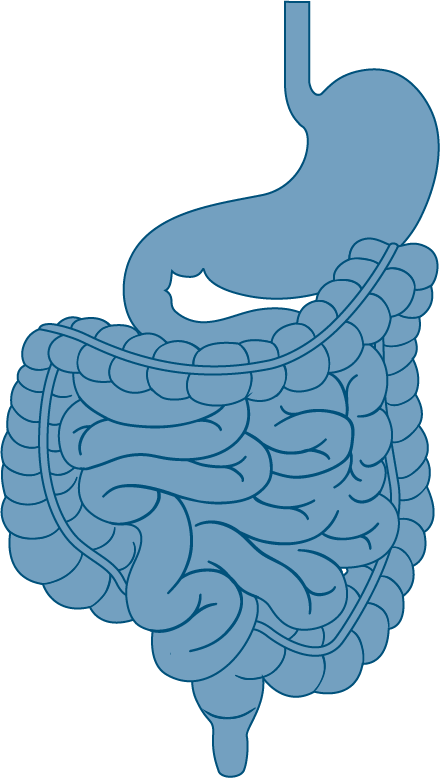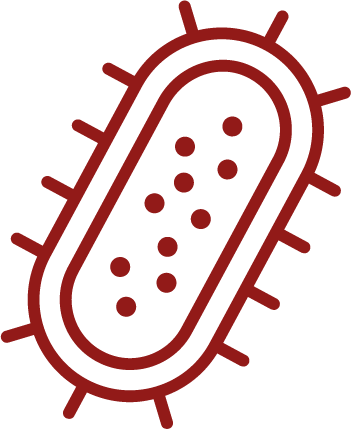
Host interactions
Representation of the interconnection between microbiome and epithelial layer: Cell assays coupled to in vitro gut simulations
The simulation of the gastrointestinal tract is not complete without simulation of the intestinal epithelial cell wall and other tissues interacting with the epithelial cells. For example, the absorption of many nutrients depends on active transport over the gut wall and countless health effects of the microbiome depend on the microbiome-host interactions.
Microbiome-host interactions simulating active absorption, inflammation, immunomodulatory properties and gut health.
ProDigest has developed and validated several in vitro cell assays as a standalone services, but also combined with our in vitro technology platforms. Combining cell assays with the colonic or the Upper GI tract simulations it is possible to study the effects on cell systems of the test product in its biorelevant context (during digestion or colonic fermentation), as well as the indirect effects produced by its interactions with the gut microbial environment.
Available assays include:
- Transport assay: investigates transport of nutrients, minerals, metabolites and drugs. Intestinal epithelial-like cells (Caco-2) cells are matured into a confluent and functional monolayer, mimicking the intact gut epithelium. Transport of molecules over the epithelial barrier can be quantified, and it is representative of bioavailability and absorption at the level of the gut epithelium. As such it allows to distinguish between bioaccessibility and bioavailability.
- Inflammation-induced leaky gut models: evaluate the impact of test products or samples on gut barrier permeability and production of pro- and anti-inflammatory cytokines and chemokines (quantified using Luminex). In these assays, a functional epithelial layer (Caco-2 cells) is damaged by activated immune cells in the basolateral compartment, creating a ‘leaky gut’ that is reminiscent of the low-grade inflammation observed in inflammatory bowel disease. Both macrophage-like THP-1 cells or PBMCs (T cells, B cells and NK cells), representative of the innate or the adaptive immune system, respectively, are available.
- Wound healing of the intestinal epithelium is important to keep an intact barrier. preventing intestinal diseases. This in vitro wound healing assay the closing of a wound in a confluent layer of T84 cells is assessed microscopically and quantified in function of time.
- Adhesion/invasion assay: allows to test enteropathogenic capacity of bacteria towards epithelial cells. In addition, the assay can be used to assess the influence of certain food and/or pharmaceutical compounds on the adhesion and invasion capacity of enteric pathogens, by modulating the gut microbiome.

Investigational topics










